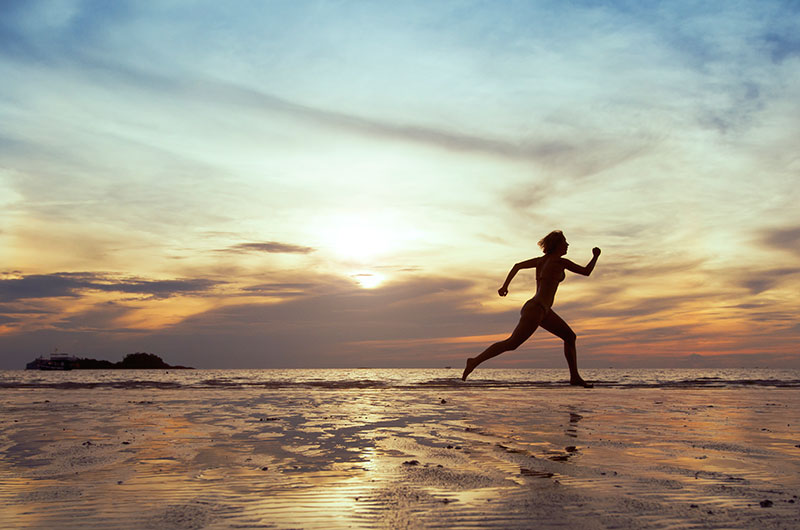Today, a back-to-basics movement has driven runners to shed their stable, but cumbersome, running shoes in favor of a more “natural” approach.
For a few hardy runners, that literally means running barefoot. Most people, however, choose between two lightweight options—barefoot or minimalist running shoes.
Running Fad or Here to Stay?
Early on, runners raced to buy barefoot running shoes like those made by Vibram, with a glove-like fit and separate pouches for each toe.
More recently, sales of minimalist shoes—with added support and protection—have picked up. Unlike with barefoot shoes, many of which are no doubt collecting dust in a closet, interest in minimalist shoes shows no sign of fading.
“We’re starting to see people coming back and getting their second or third pair,” says John Lomogda, manager of Running, Etc. in Norfolk, Va.
Barefoot Running Shoes
Barefoot running shoes, such as the popular Vibram FiveFingers, are the closest you can get to running barefoot without baring all. Many of these offer little or no cushion in the heel pad, with only 3 to 4 millimeters between your foot and the ground.
These shoes are also “zero drop,” which basically means the heel and the ball of your foot are level. This encourages you to strike the ground with the mid- or forefoot, something common among true barefoot runners.
Runners with high arches are likely to have the fewest problems switching to barefoot running shoes, which means the shortest break-in time. Heavy pronators (people whose feet tend to flatten during weighted exercise) may have more trouble due to the lack of arch support.
Minimalist Running Shoes
Like a cross between traditional and barefoot running shoes, minimalist shoes are a great way to get started with barefoot running.
They are extremely lightweight with little to no arch support. The low heel height (4 to 8 millimeters) still supports a natural running style by encouraging you to land on your midfoot.
Some minimalist shoes also come with the “zero drop” option, says Lomogda. “That would be like the Saucony Virrata.”
Unlike barefoot running shoes, minimalists have enough room in the toe box for you to spread your toes, which improves balance and grip.
Again, people with high arches should have an easier time switching to these shoes. Overpronators, though can find shoes with more arch support in styles like Brooks PureCadence and Saucony Mirage.
But don’t think this extra support is going to detract from the benefits of minimalist shoes.
“Even the most supportive shoe in a line of shoes is still going to be a lot lighter,” says Lomogda, “and not as much shoe as a traditional training shoe.”
Getting Started With Minimalist Running
Just about any runner can safely make the switch to barefoot or minimalist running shoes, but you should have a pretty regular training schedule for best results.
You will work different muscles in your feet and lower legs, so the best way to avoid injuries—like achilles tendonitis, plantar fasciitis and calf soreness—is to start slowly and build slowly.
That means rotating between your current shoe and the barefoot or minimalist running shoe.
“We tell people to think in terms more of minutes than miles,” says Lomogda. “So you might start off running [in the minimalist shoe] just 10 minutes once or twice a week, and do that for four or five weeks. And maybe add another day, or go up to 12 or 15 minutes.”

